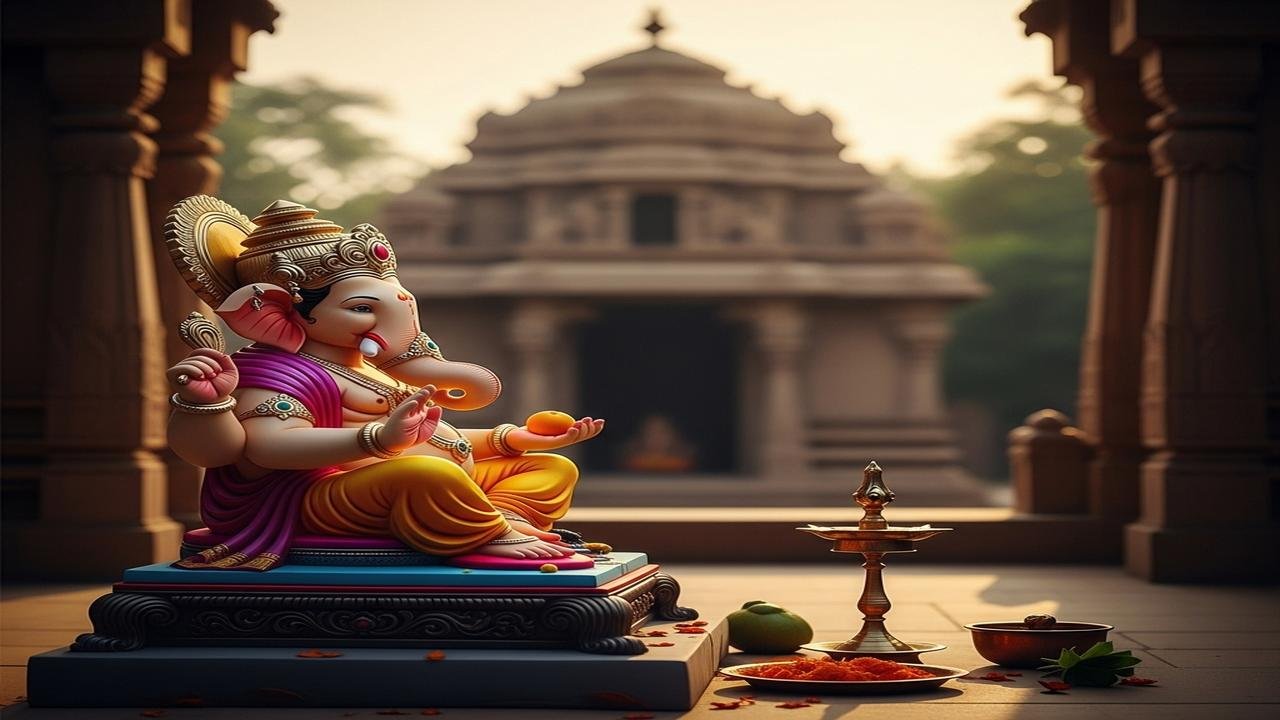The Secret Reason We Worship Lord Ganesha First

Why is Lord Ganesha Worshipped First?
Imagine a family preparing for a wedding. The house hums with excitement, arrangements are being checked, and everyone pauses for a moment of prayer before the festivities begin. The first face they turn to is not of the bride or groom, but of Lord Ganesha. This simple, loving habit tells a deeper story about why Ganesha holds the special place of being worshipped first.
Long ago, in stories passed down through generations, Goddess Parvati created a loyal boy from her own energy to guard her. When Lord Shiva returned and did not recognize him, a dramatic turn gave the boy an elephant head and a bright new life. That child became Ganesha, known as Ganapati — the lord of the group. His arrival in the scriptures came with a clear blessing: invoke him first, and your path will be cleared.
Ganesha as Vighnaharta — the remover of obstacles — is more than a title. In every ritual, at the start of a journey, or before a new venture, people seek his grace to dissolve hurdles. This belief is not only spiritual but practical. Beginning with a calm, focused prayer helps families and individuals center their minds and approach tasks with steadier hearts.
The symbolism of Ganesha is gentle and rich. His elephant head stands for wisdom and strength. The large ears teach us to listen more; the small eyes remind us to concentrate. The trunk, flexible and powerful, teaches adaptability. His big belly signifies the ability to absorb life’s pleasant and unpleasant experiences. And his tiny vehicle, the mouse, shows humility — even the small can carry great responsibility.
These symbols matter in everyday life. A student preparing for exams asks Ganesha for clarity. A shopkeeper beginning a new business seeks his blessings for success. Parents bring newborns for naming ceremonies; travelers offer a prayer before leaving home. In each case, invoking Ganesha is a request for a smoother, wiser beginning.
Traditions around Ganesha are warm and colorful. During Ganesh Chaturthi, neighborhoods come alive with clay idols, songs, and sweets. Houses display small clay or brass images and offer modak — a sweet said to be Ganesha’s favorite. People offer durva grass, coconut, and red flowers, light a lamp, and chant simple mantras like Om Gam Ganapataye Namah. These acts are both devotional and communal, strengthening bonds and shared purpose.
Historically, sages and kings sought Ganesha’s guidance before important decisions. Temple rituals begin with an invocation to him. Over centuries, his presence in art, dance, and literature grew, making him a unifying figure across regions — known as Vinayaka in the south, Bappa in Maharashtra, and by many other names.
In modern times, Ganesha’s appeal continues. Entrepreneurs, students, and artists look to him as a symbol of new beginnings and inner clarity. Psychologically, remembering Ganesha at the start of a difficult task can calm anxiety and promote mindful focus. When communities immerse idols at the end of Ganesh Chaturthi, it is both a farewell and a promise to return to purity of purpose.
Worshipping Ganesha first is a practice that blends faith, culture, and simple wisdom. It reminds us to begin with humility, listen with care, and act with steady focus. Whether in a small home altar or a grand temple procession, the moment we bow to Ganesha is a moment of setting intention.
Conclusion
Offering the first prayer to Lord Ganesha is an invitation to clear the inner and outer way. As you start a new chapter — big or small — pause, breathe, and call upon the kind strength of Ganesha. In that quiet gesture, you prepare your heart for a journey guided by wisdom and grace.
